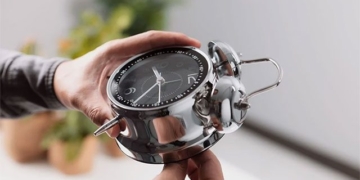When buying jewelry, we rarely think about the possibility of purchasing counterfeit items. After all, we buy jewelry from stores where sales staff can explain everything. However, sometimes even the consultants may not know exactly what they are selling. Jewelry requires the buyer’s attention, and it is important to know at least some basics about gemstones and precious metals. Otherwise, you may encounter issues with fakes.
Jewelry Facts That Not Everyone Knows
- First, gold is denser than most other metals. Therefore, if a gold ring feels too light for its size, it is likely a fake.
- Second, if you are looking for a gemstone of a certain color, you are likely to encounter the most expensive options.
- Third, do not trust any salesperson who asks you to look at a diamond in sunlight.
- Fourth, when selecting pearls, remember that they will not be perfectly round.
- Fifth, if a salesperson claims that real amber has no smell, do not believe them.
- Sixth, when real gold comes into direct contact with your skin, it will not discolor.
- Seventh, check the diamond and fog it up with your breath.
- Finally, fake silver will not melt ice, unlike real silver.
First, gold is denser than most other metals. Therefore, if a gold ring feels too light for its size, it is likely a fake.
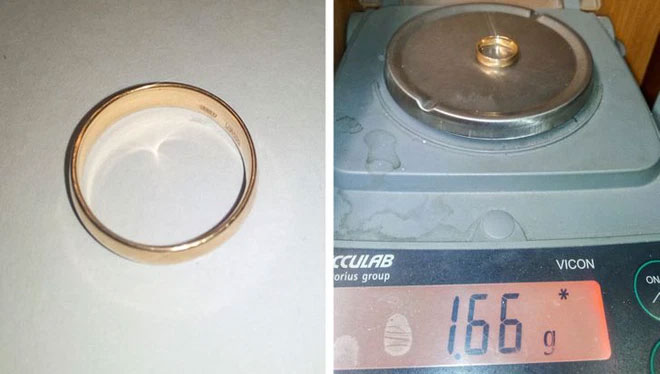
Look at this ring; it seems like an ordinary wedding ring, but there is a small detail. The wearer feels it is slightly lighter than it should be.
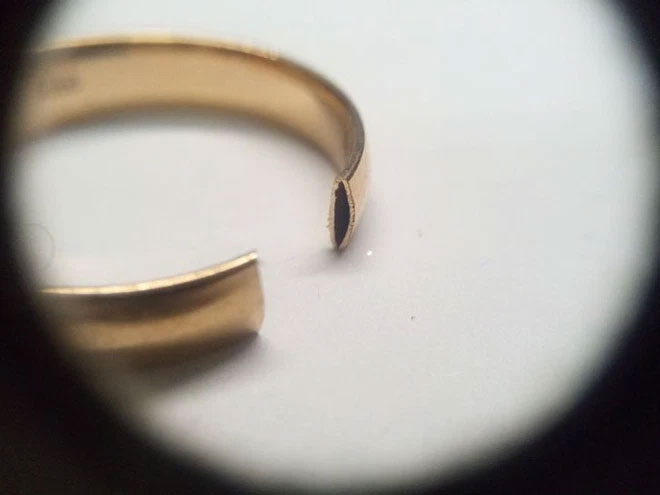
If we cut it a bit with a saw, we can open it to find that it is hollow inside.
Of course, it is not terrible. However, considering that wedding rings are worn for long periods, this is a very serious flaw as it cannot be repaired. Such rings are easily deformed and cannot be resized. But this manufacturing method is very popular because it is cheap.
Second, if you are looking for a gemstone of a certain color, you are likely to encounter the most expensive options.
Like any other business, sales staff always want to persuade buyers to spend as much money as possible. They will offer the most expensive options and not mention cheaper alternatives. For example, if you want to buy an item with a blue stone, the salesperson will likely present options with very expensive sapphires.
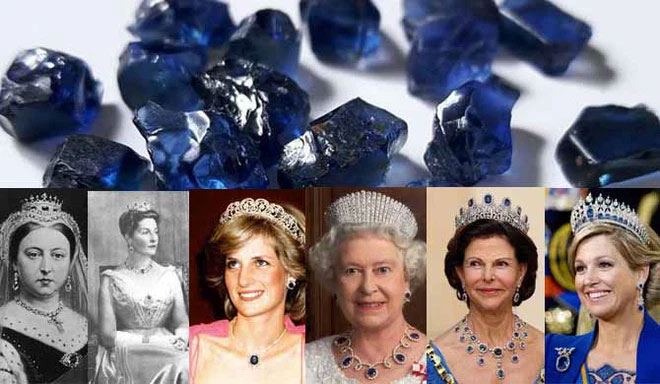
Royalty often prefers blue, which is why sapphire has long been regarded as an elite gemstone, sometimes referred to as “royal blue.” This is why jewelry featuring it tends to be more expensive. However, when you go to the store, you need to understand that not only sapphires come in blue; there are also spinel, tanzanite, or tourmaline available at much lower prices.
Third, do not trust any salesperson who asks you to look at a diamond in sunlight.
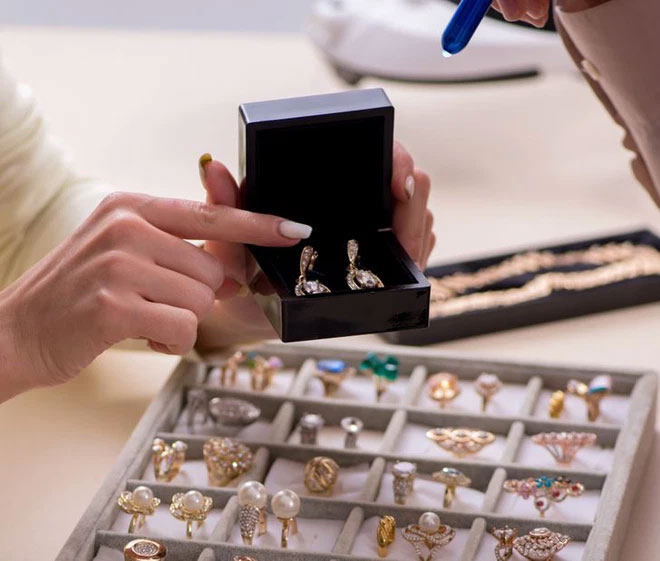
Lighting in jewelry stores and sunlight always favors jewelry.
This is the oldest trick in the book. Lighting in jewelry stores and sunlight always favors jewelry. Thanks to this, any piece looks beautiful, even a poor-quality stone will shine in the sun.
To make a diamond sparkle in sunlight, simply cleaning it is enough. Therefore, you should not trust anyone who suggests you go near a window to see “what the stone really looks like.”
Fourth, when selecting pearls, remember that they will not be perfectly round.
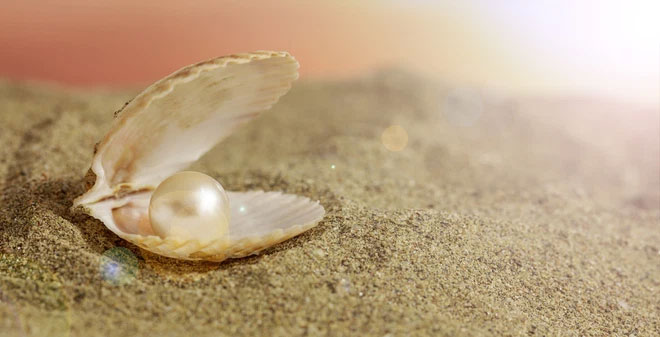
Perfectly round pearls are hard to find in jewelry stores.
Perfectly round pearls are considered the most valuable type and are not easy to find in jewelry stores. It is quite easy to check if a pearl is real: just rub it against another pearl. Fake pearls slide past each other, while real pearls feel rougher due to their nacre layers. You can also pay attention to the holes. In real pearls, they are very small, while in fake pearls, they are larger.
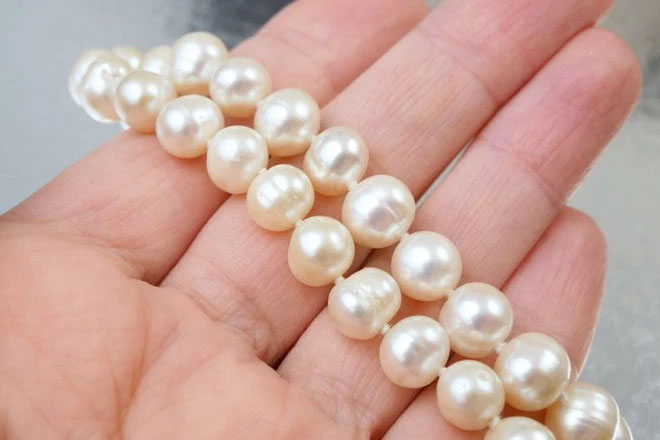
Fake pearls often slide past each other.
When choosing pearl jewelry, temperature also plays a significant role. Real pearls feel cold to the touch and warm up due to body heat after a few seconds. Fake pearls made of plastic are at room temperature and will not feel cool when touched. However, fake pearls can also be made from glass, which may feel cold when touched. But these pearls take longer to absorb heat from the body.
Fifth, if a salesperson claims that real amber has no smell, do not believe them.
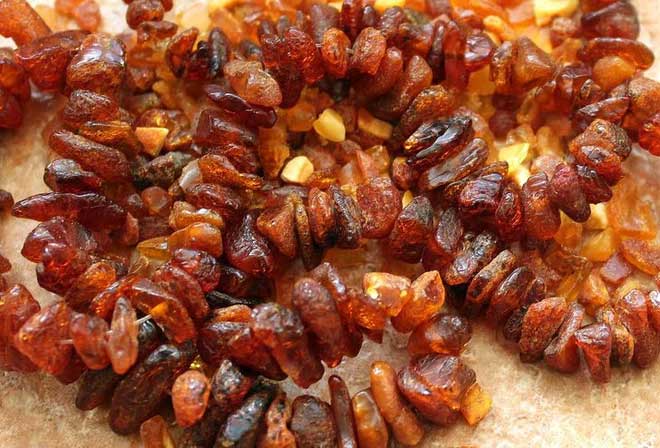
Natural amber has a distinct smell.
You can check whether amber is real right in the store just by smelling it. Natural amber has a distinct smell. When heated, real Baltic amber releases a burnt resin scent. Fake amber often smells like burnt plastic.
You can also check whether amber is real at home. All you need to do is add 1/4 cup of salt to 2 cups of warm water and stir until the salt dissolves completely. Then, place the amber in this solution. If the jewelry floats, it is a genuine product. However, you should also consider other accompanying materials. For example, if the earrings have a metal clasp, it will pull the piece of amber down, but the amber itself will float.
Sixth, when real gold comes into direct contact with your skin, it will not discolor.
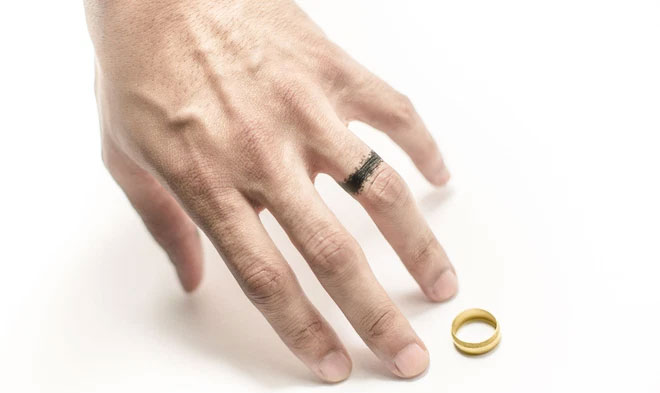
If it is fake, the skin will turn black, blue, or green.
Simply holding a piece of gold or a gold ring between your fingers for a few minutes is enough. Sweat from your hands will react with the metal and discolor your skin, or not. If it is fake, the skin will turn black, blue, or green. However, you should not place it on an area of skin that has lotion on it, as gold can darken that area.
Seventh, check the diamond and fog it up with your breath.
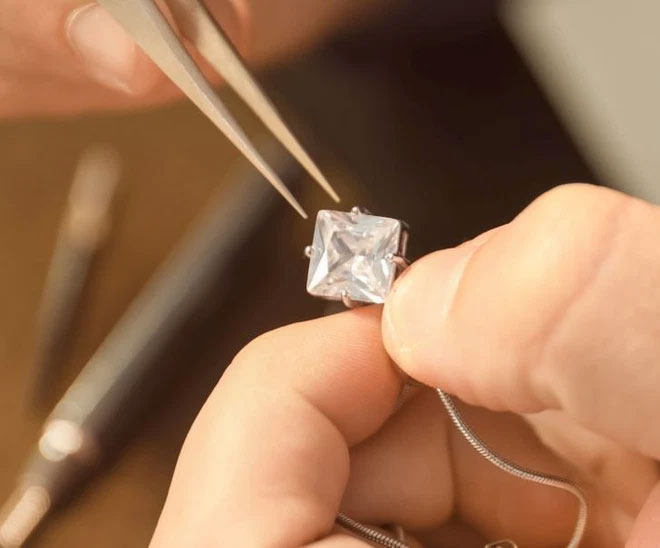
A real diamond does not react to warm breath.
If the diamond remains fogged for a few seconds, it may be a fake. A real diamond does not react to warm breath because condensation does not cling to its surface.
Diamonds can also be tested with water. You just need to drop a stone into it and see what happens. Diamonds have a high density, so they cannot float on the surface of the water.
Finally, fake silver will not melt ice, unlike real silver.
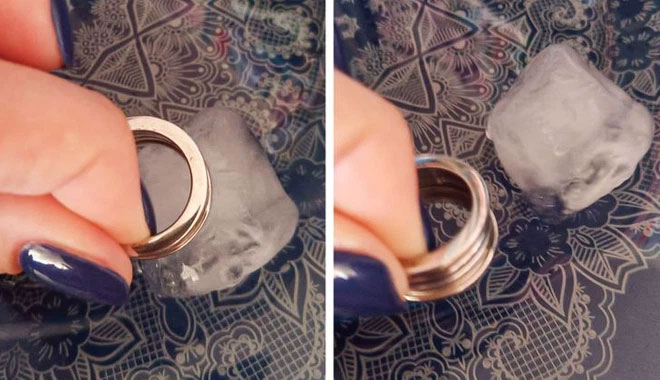
If the ice on the jewelry melts faster, then you have real silver.
You just need to take 2 ice cubes, place one on a metal plate, and one on a piece of silver. If the ice on the jewelry melts faster, then you have real silver. If both cubes melt at the same rate, then it is fake.
And just like amber, you can also check whether silver is real just by smelling it. Real silver has no distinct smell. If there is an unusual odor, part of it may be silver-plated or made of copper or zinc.

















































